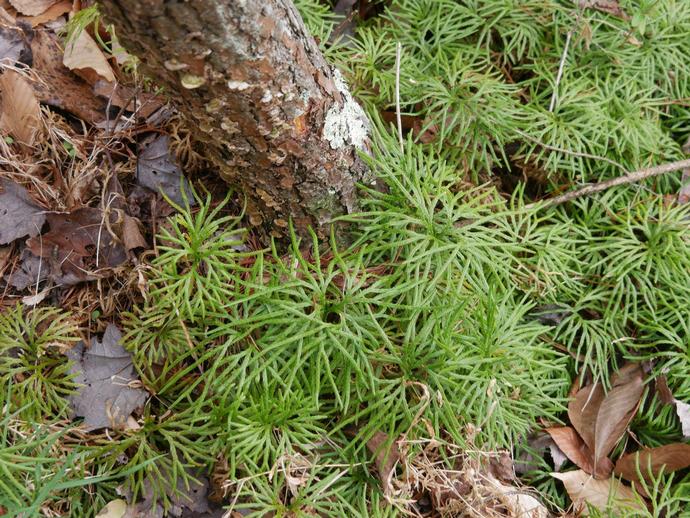April 26, 2020
You've probably seen this plant before, carpeting the forest floor like some sort of ... carpet. This is Diphasiastrum digitatum, also known as ground cedar or fan clubmoss. Clubmosses like this one are lycopods, which is the oldest surviving division of vascular plants. The earliest lycopod fossils date back more than 400 million years! While the surviving members of the division are all pretty small, ancient lycopods from hundreds of millions of years ago resembled towering trees. If you've ever attended Dragon Festival at the Virginia Museum of Natural History, you're probably familiar with these unique plants. The museum's partners in the Dragon Research Collaborative at Roanoke College theorize that dragon myths originated when early humans found fossils of a type of giant lycopod known as Lepidodendron; the leaf scar patterns on the trunks of these plants resembled some giant, scaly beast, and imaginations ran wild.
Unlike most plants, Diphasiastrum digitatum produces neither flowers nor seeds. Instead, it produces spores that are contained in a cone-like structure. These spores have a high oil content which makes them highly flammable! These spores used to be collected and dried to make lycopodium powder, which was a primitive flash powder used for special effects in theatrical productions and early camera flashes, among other uses. #BenInNature
About this post: Social distancing can be difficult, but the next few weeks present a great opportunity to become reacquainted with nature. While he is working from home, Administrator of Science Ben Williams is venturing outdoors each day to record a snapshot of the unique sights that can be found in the natural world.
This post brought to you by VMNH Corporate Supporter Bassett Furniture.

 Hours & Admissions
Hours & Admissions Directions
Directions

